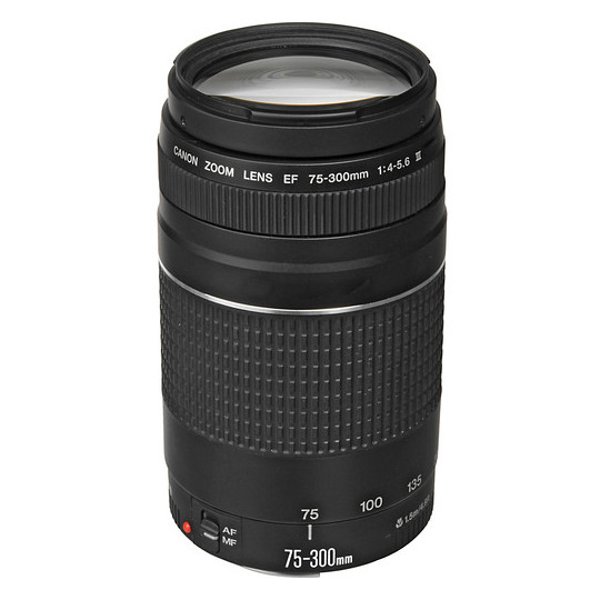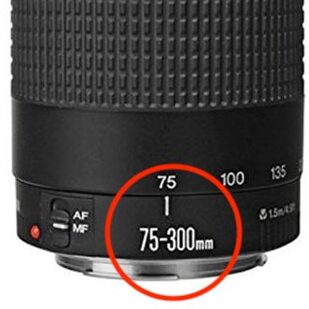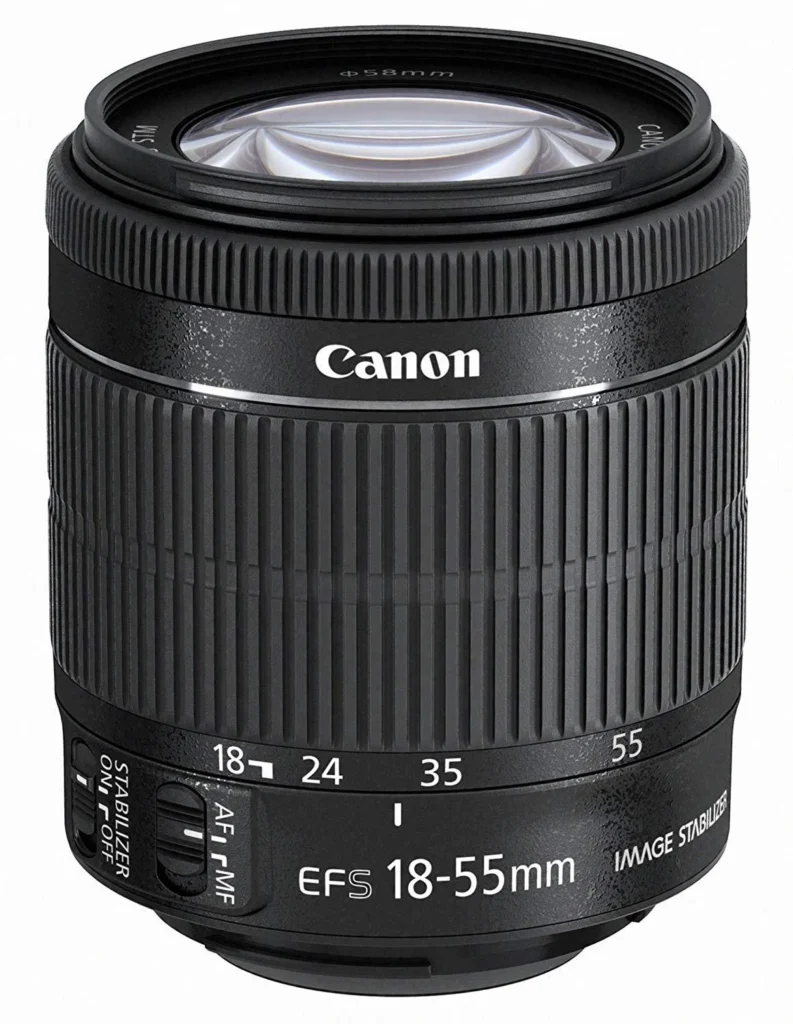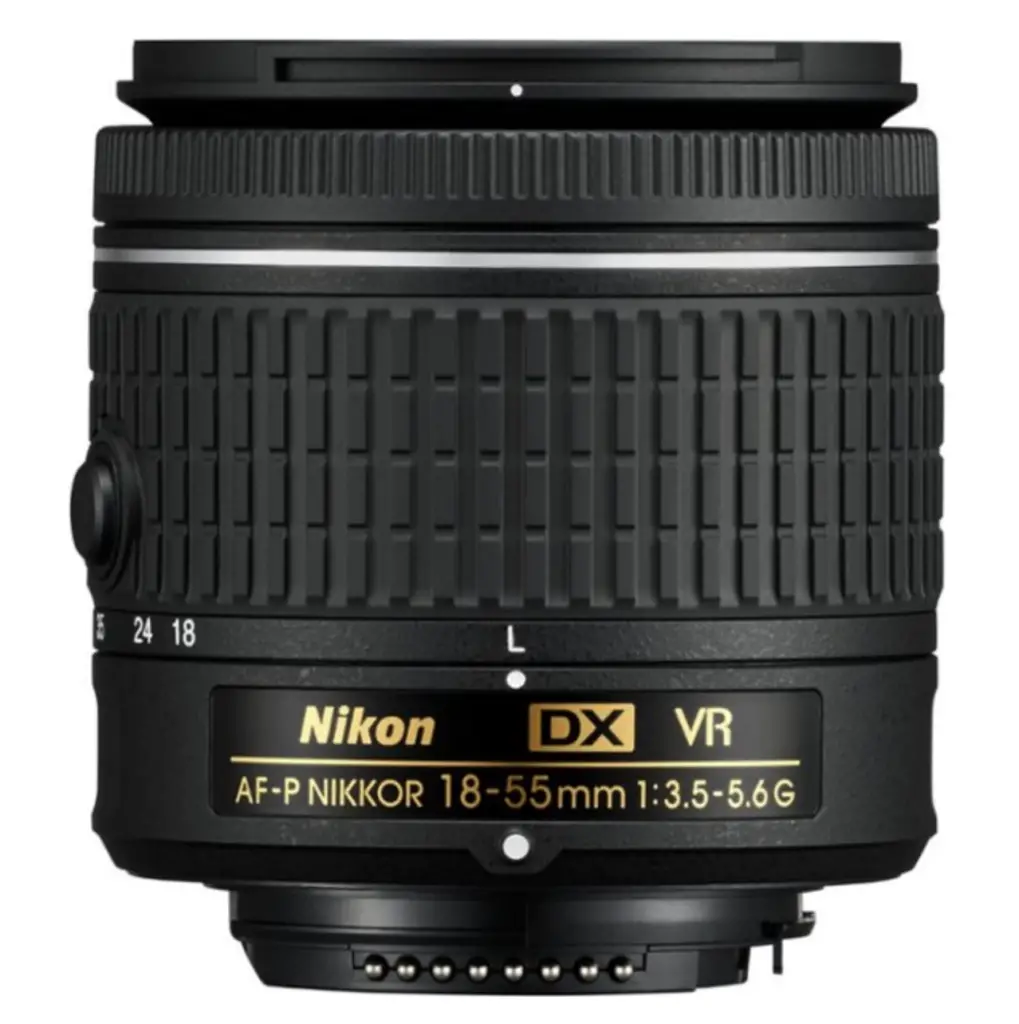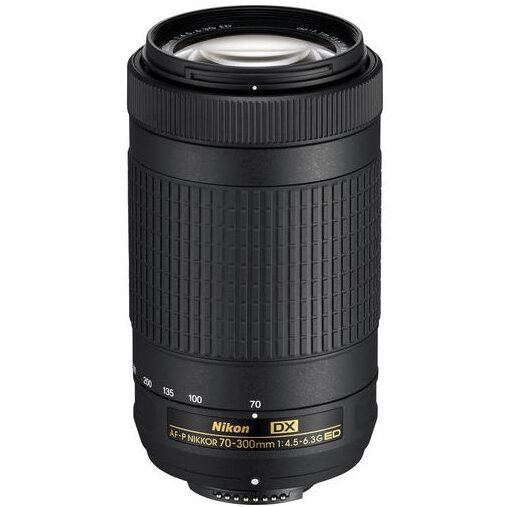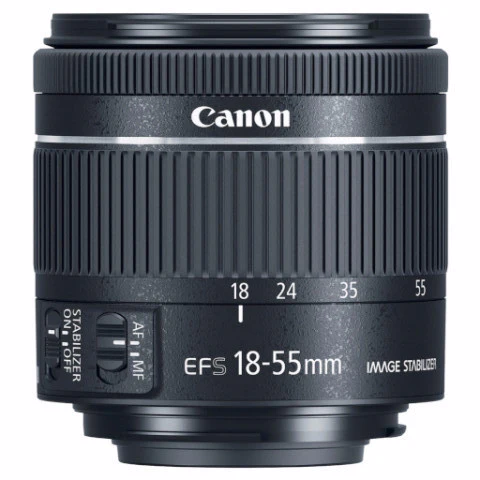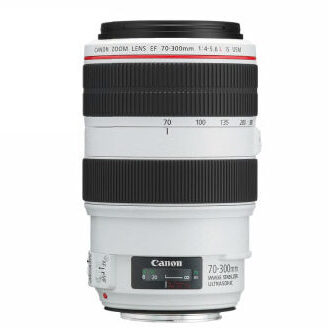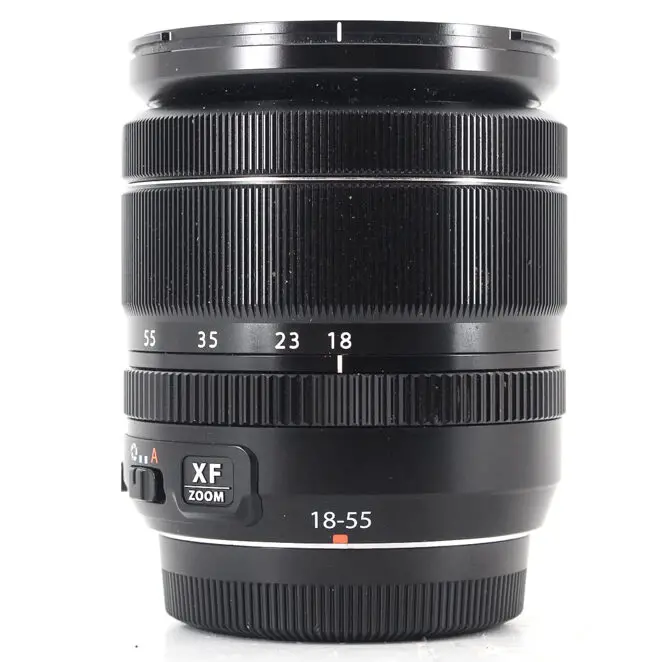Most modern-day digital photographers have at some point owned an 18-55mm kit lens that came with their entry-level DSLR or Mirrorless cameras. One of the most common lenses to pair with a kit lens is the 75-300mm telephoto lens but how are two lens different?
The key differences between an 18-55mm and the 75-300mm are the range of focal lengths they cover, their size & weight, minimum focal distances, and apertures.
The 75-300mm is a great addition to any camera bag since it has a longer focal length. The focal length pairs well with the 18-55mm kit lens since it will allow the photographer to reach further with the longer focal length. Let us explore a bit more about the differences between these two lenses and why they complement each other so well.
75-300mm Lens
Pros of a 75-300mm Lens
As a standard – super telephoto lens, the main use of the 75-300mm is the ability to make far away objects appear closer when you cannot physically get close, like for astrophotography or wildlife photography. The level of detail that you can capture from the distant subject is better than what you can see with the naked eye.
Some of the other benefits of owning a 75-300mm lens are:
- Great for photographing far away subjects
- Isolating subjects from the background
- Good for closeups to capture more detail of your subject or object
- Variety of focal lengths (wide to standard)
- Generally, can be used on cameras with full frame sensors and cropped sensors (like the Canon EF 75-300mm)
Cons of a 75-300mm Lens
Short telephoto lenses like the 75-300mm do have some drawbacks. The most common cons of the 75-300mm are the following:
- Poor low-light performance due to the limited minimum aperture (f/4 compared to f/3.5 or f/2.8 of kit lenses)
- Not as versatile as the 18-55mm lens because it last a wide angle focal length
- Prone to camera shake or blurry images due to the camera shaking when taking an image (you can fix this by using a tripod to stabilize your camera or upgrading to a camera with image stabilization built-in)
- Very narrow field of view
- Smaller aperture limits control of depth of field versus the 18-55mm lens
- Not as compact and usually heavier and larger than the 18-55mm due to more glass elements in the lens
- Not as many lenses at 75mm-300mm from the major camera manufacturers so I’d recommend researching zoom lenses of the 70-300mm focal length for more options.
- Generally have a longer minimum focal length than lenses with short focal lengths (for example, the 75-300mm lens from Canon has a 1.5m/4.9ft vs the 0.25m/0.8ft on the Canon 18-55mm)
What does a 75-300mm lens mean?
The 75-300mm is zoom lens that is classified as a telephoto lens, or a lens that has a focal length greater than 70mm. Telephoto lenses are broken down into short telephoto (70-135mm), medium telephoto (135mm – 300mm), and super telephoto (above 300mm). Having a 75-300mm focal length
that is classified as a telephoto lens, or a lens that has a focal length greater than 70mm. Telephoto lenses are broken down into short telephoto (70-135mm), medium telephoto (135mm – 300mm), and super telephoto (above 300mm). Having a 75-300mm focal length means that it is a short to medium telephoto lens. The 75-300mm lens is also a zoom lens since it has multiple focal lengths available – a short end at 75mm and a long end at 300mm with other lengths accessible in between.
means that it is a short to medium telephoto lens. The 75-300mm lens is also a zoom lens since it has multiple focal lengths available – a short end at 75mm and a long end at 300mm with other lengths accessible in between.
Telephoto lenses are great for shooting subjects that are far away so photographers typically use the 75-300mm for taking photos when you cannot be close to a subject like athletes playing football or a bird perched on a tree.
are great for shooting subjects that are far away so photographers typically use the 75-300mm for taking photos when you cannot be close to a subject like athletes playing football or a bird perched on a tree.
What would you use a 75-300mm lens for?
As a telephoto lens, the 75-300mm is good for being able to see faraway subjects or getting close-up shots. The 75-300mm can be used for several photographic genres like:
- Portraits
- Outdoor sports and events
- Pets and Wildlife
- Astrophotography (taking pictures of stars, the moon, or other objects in space)
- Some of these lenses are also great at Macro Photography, or close up photography due to the focal length
How far can you see with a 75-300mm lens?

The question of how far can you shoot is always relative to the size of the subject and the genre of photography. For example, in sports photography a 75-300mm lens can cover distances of 10m (or around 33ft) at 75mm and 55m (or around 180ft) at 300mm when shooting a human-sized subject and would fill about 2/3rds of a vertical frame.
In astrophotography, the 300mm focal length is recommended when photographing the full moon where the lunar craters would be visible.
Why Is my 75-300mm lens blurry?
The most common reason for blurry photographs using the 75-300mm lens is due to camera shake when holding the camera. The general rule to prevent camera shake from affecting image quality is to shoot with a shutter speed equal to the 1 / “focal length” when shooting handheld. For example, if you are shooting at a focal length of 75mm then your shutter speed should always be set at or faster than 1/75th or at a focal length of 300mm it should be set at or faster 1/300th second to avoid camera shake.
If you are in a low-light environment and you cannot shoot at (or above) the recommended shutter speed, a sturdy tripod or monopod attached to the camera will help eliminate camera shake.
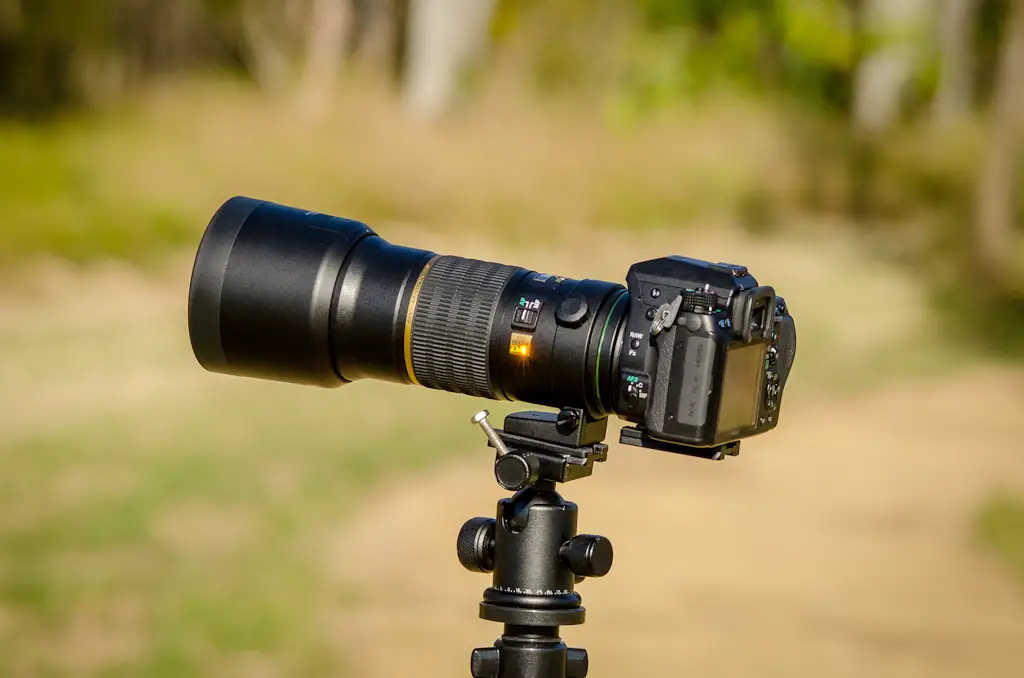
18-55mm Lens
Pros of an 18-55mm Lens
The 18-55mm kit lens is a versatile entry-level lens for learning the foundations of photography and your camera. Some of the benefits of using a kit lens are:
- A lens that comes with your camera body so you can get started right away (better than nothing!)
- Lightweight and compact lens compared to larger zoom lenses (like the 75-300mm)
- Covers wide – standard focal lengths
- Most modern kit lenses have built-in image stabilization
- Can be used for most photography genres
- These lenses tend to have a closer minimum focusing distance compared to longer zoom lenses like the 75-300mm (0.25m/0.8ft on the Canon 18-55mm vs 1.5m/4.9ft on the Canon 75-300mm). This means you can get much closer to your subject with the 18-55mm lens than the other lens.
- Inexpensive compared to other lenses so if you break it you can buy another for relatively cheap
Cons of an 18-55mm Lens
Being a starter lens has its drawbacks especially since this is an inexpensive lens with generally inferior optics. Other downsides of using the kit lens are:
- Poor low-light performance due to limited minimum aperture
- Generally cheap lens that doesn’t have the same image quality as lenses even $50 – $100 more expensive (and sometimes cheaper prime lenses like a 50mm lens
 )
) - No telephoto capability since it can’t zoom longer than 55mm like the 75-300mm
- Variable aperture
 makes it
makes it  difficult to shoot in manual mode when zooming in and out the aperture will change
difficult to shoot in manual mode when zooming in and out the aperture will change - Most kit lenses are for APS-C sensors (cropped or smaller than full frame sensors) so they cannot be used on cameras with full-sized sensors
What is a kit lens used for?
A kit lens it the lens that came with your camera when you purchased it. They are usually have a focal length range of 18-55mm and are a versatile all-around lens but are not as good as other lenses in taking images in low light, image sharpness, build quality, or image contrast (except for the 18-55mm lens by Fujifilm). However, the lens has access to a variety of focal lengths, it is useful with for different photography genres such as:
- Landscape
- Still Life / Food Photography
- Portraits
- Architecture
- Travel & Lifestyle
- Street Photography
- Pet Photography
How far can an 18-55mm lens shoot?
The reach of the 18-55mm lens as compared to the 75-300mm is very short as it is a wide to normal focal length style lens. At 55mm and at a distance of 6m (or 20.5 ft), the photographer with an average height person (5 ft 10 inches) being photographed will fill 2/3rds of a vertical frame.
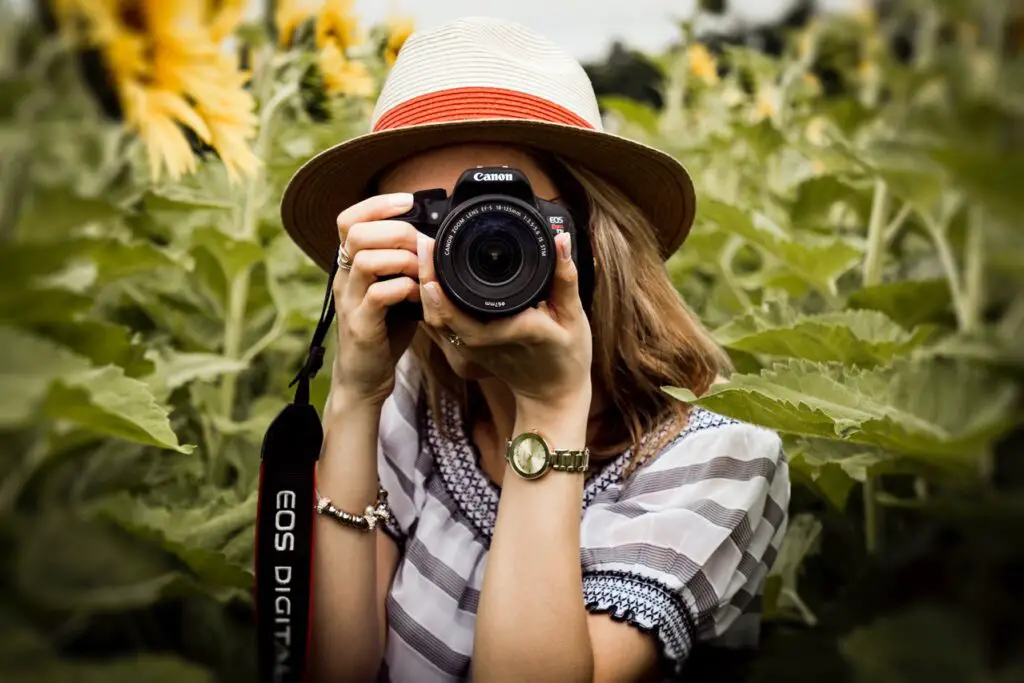
What does 18-55mm mean on a camera lens?
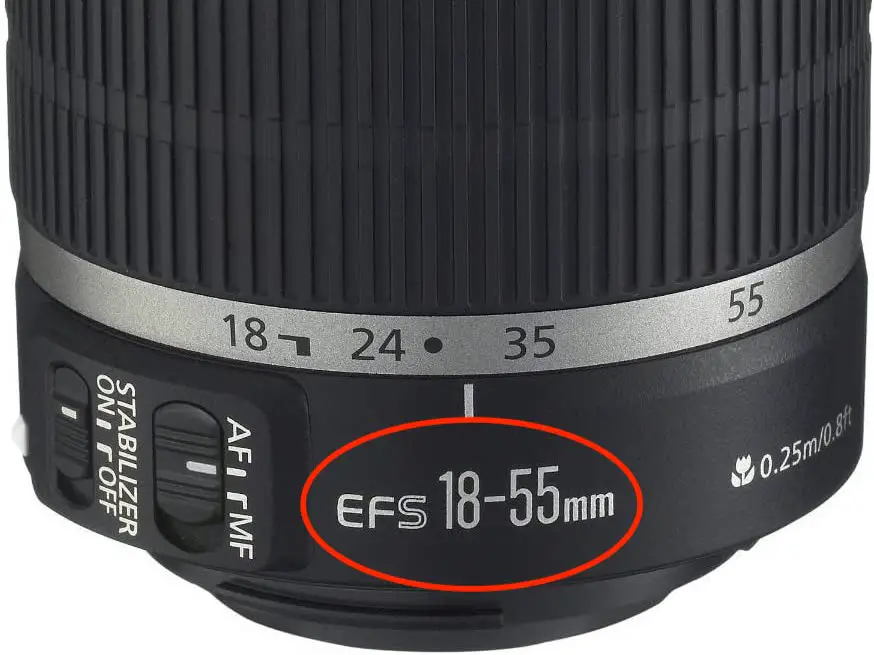
The numbers 18-55mm on a lens are the focal lengths and view angle a lens can shoot. The wide end (18mm) typically includes a larger viewing angle (more of the environment details) while the longer end (55mm) is similar to the field of view of what humans normally would see with our eyes. An 18-55mm lens is very versatile and considered a general-use lens, which means it can be used for a number of photographic applications.
and view angle a lens can shoot. The wide end (18mm) typically includes a larger viewing angle (more of the environment details) while the longer end (55mm) is similar to the field of view of what humans normally would see with our eyes. An 18-55mm lens is very versatile and considered a general-use lens, which means it can be used for a number of photographic applications.
Is an 18-55mm lens good for video?
The 18-55mm is a good focal length when shooting videos as it allows you to capture more of a scene at the wide end at 18mm and also a normal perspective at the longer end at 55mm. Most modern kit lenses also come with some form of Image Stabilization which helps in smoothing out the camera shake when taking videos at the longer end. I would make sure the focusing motor of the lens is quiet and fast enough for video purposes. One of the best 18-55mm lenses for video is the Fujifilm 18-55mm lens.
Is an 18-55mm lens a Wide-Angle?
Yes, the short end of the kit lens at 18mm is considered wide-angle. Even when on an APS-C camera with a crop factor of 1.5x, the short end of the kit lens is still at 28mm, which is still in the wide-angle range. Anything below 35mm on a full-frame camera or its equivalent with the crop factor on an APS-C camera is considered wide-angle.
with a crop factor of 1.5x, the short end of the kit lens is still at 28mm, which is still in the wide-angle range. Anything below 35mm on a full-frame camera or its equivalent with the crop factor on an APS-C camera is considered wide-angle.
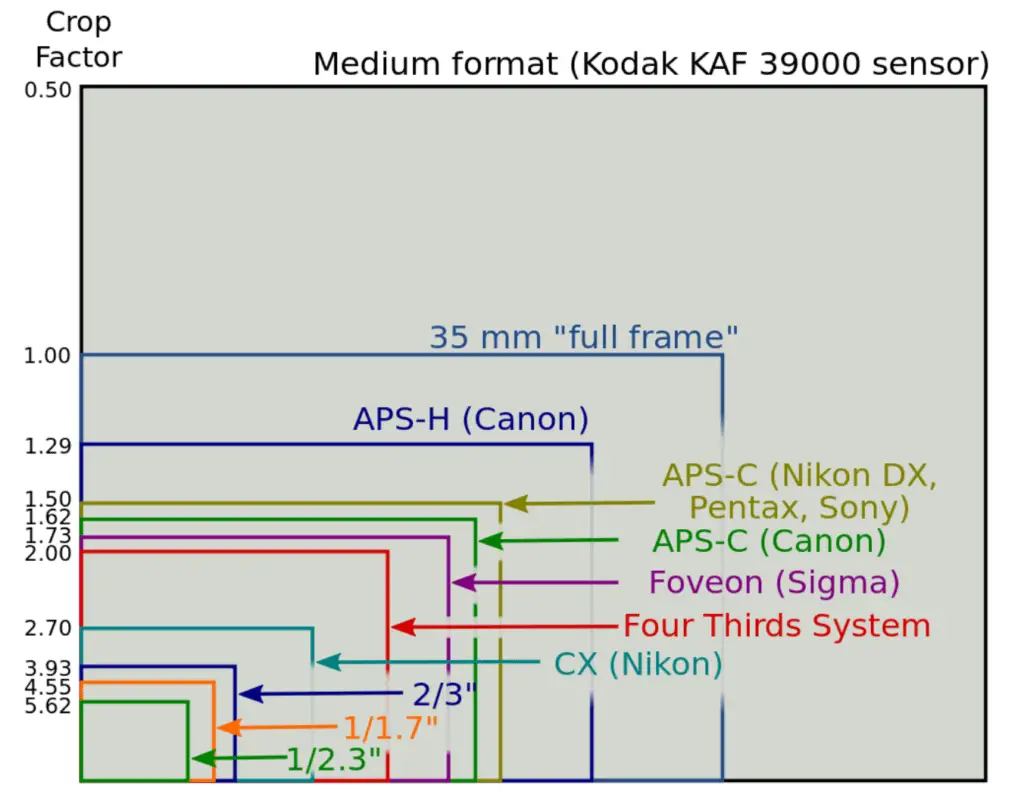
 shows common crop factors of cameras.
shows common crop factors of cameras.Lens Recommendations for the 18-55mm and 75-300mm
If you have already decided wanting to use both the 18-55mm kit lens and 75-300mm telephoto lens with your camera, the next step is to choose the one best for your. The main things to look out for in both these lenses are the price, features, and optical performance. Keep reading as we narrowed down the list by brand to help you with your purchase.
Nikon 18-55mm & 70-300mm
Nikon’s DSLR kit lens has seen several upgrades over the years. The one that would be most recommended is the Nikkor AF-P 18-55mm F3.5-5.6G DX VR. There is a version without the Vibration Reduction (VR), which is Nikon’s image stabilization feature, but it would be better just to add a bit more for VR. The lens has good optical performance, has a new silent autofocus motor, and also manual focus override built-in.
If you are using the Nikon Z mirrorless system, the Nikkor Z 16-50mm would be your best bet. It is a solid performer that comes in a very small. It is also packed with a new stepping motor which gives you fast, accurate, and near-silent autofocus. However, be aware that this lens on a Nikon Z6 and Z7 the focal lengths would be around 24mm – 75mm instead of 18-55mm since it is a DX lens (Nikon cropped sensor designation) . See this article for more information about the difference between DX and FX lenses
. See this article for more information about the difference between DX and FX lenses on a Nikon cameras.
on a Nikon cameras.
There are several versions of the 70-300mm from Nikon both for full-frame and APS-C. The best performer among the bunch when thinking about price and optical performance would be the Nikkor AF-P DX 70-300mm f/4.5-6.3G ED VR. It is compatible with Nikon APS-C DSLRs released from 2014 onwards and Z mirrorless using the FTZ adapter. It has the new stepping motor for fast silent autofocus, an ED element for optical performance, and VR to help you get sharper images when shooting handheld.
Canon 18-55mm & 75-300mm
The Canon EF-S 18-55mm f/4-5.6 IS STM is the current generation DSLR kit lens of the brand. It has good optical quality, a fast autofocus motor, and Image Stabilization (IS). The build quality has also been updated and has internal focusing which prevents the front element from rotating.
Canon also has recently updated the Canon EF 75-300mm with the newer Canon EF 70-300mm f/4-5.6 IS II USM. The improvements come with way better optics and glass to get a much sharper image with way better contrast, a faster and silent AF motor, and image stabilization up to 4-stop of light all for just a few dollars more. The EF badge also means it is compatible with both full-frame and APS-C cameras (on a APS-C sensor it will be a super telephoto zoom lens at 120mm – 480mm). Canon also put out the Canon EF 70-300mm f/4-5.6L IS USM UD, which is more expensive the the EF 75-300mm and the Canon 70-300mm combined at around $1,400 USD but is the best lens in the focal range they make for the EF lens mount. All of these lens are also a viable option if you are using a Canon R-series mirrorless camera via the EF-EOS R adapter. Speaking of Canon R mount lenses there are two that I’d recommend for the focal range: the Canon RF 24–240mm F4-6.3 is USM Lens (lower price at around $600 USD) and the much more expensive Canon RF70-200mm F4 L is USM.
While the profession level lenses like the Canon EF 70-300mm f/4-5.6L IS USM UD and Canon RF70-200mm F4 L is USM are much more expensive with this professional level lenses by Canon you also get weather resistance, better image stabilization, and a constant aperture  through the entire zoom range. However, they can be large, expensive, and heavier.
through the entire zoom range. However, they can be large, expensive, and heavier.
Fujifilm 18-55mm Kit lens
A 18-55mm lens that is that is worth mentioning in this discussion is the fantastic Fujinon XF 18-55mm F2.8-4 R LM OIS for it’s X-series line of mirrorless digital cameras like the X-T4 and X-Pro3 cameras and the like. I own this lens and have shot it next to lenses that cost twice as much and the lens holds up. The lens has one of the smallest minimum apertures for any variable aperture lens at f2.8, the lens has really good image stabilization (gets good shots up to 1/25th of a second hand holding and great for video), very quiet if not silent focusing motor, and small and compact. For my money, the lens is good enough for anyone to consider buying into the Fujifilm x-series of cameras alone, especially if you travel a lot with your gear.
Third-party Lenses
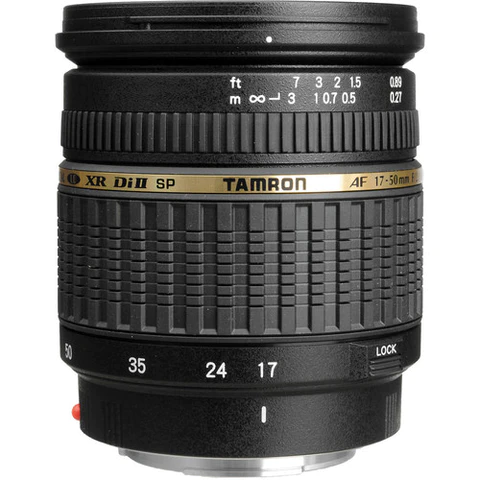
Third-party manufacturers do not manufacture kit lenses but they do provide good alternatives for Canon, Nikon, and Sony cameras. Two that are worth mentioning would be the Sigma 17-50mm f/2.8 EX DC OS HSM FLD & Tamron SP AF 17-50mm F/2.8 XR Di II LD Aspherical (IF). These two lenses are good alternatives or even upgrades for the kit lens. They feature image stabilization, fast AF speeds, and most importantly constant F/2.8 apertures across the zoom range.
For the 75-300mm telephotos, the Tamron 70-300mm F/4.5-6.3 Di III RXD & Sigma 70-300mm f/4-5.6 APO DG Macro are good budget-friendly options from third-party lens makers. They cost less than the Nikon or Canon equivalent lenses but perform as well as their counterparts. Do check for autofocus compatibility if you intend to purchase these for the Canon or Nikon mirrorless systems.
Is the 75-300mm right for you?
If you are looking for extra reach with focal lengths for your next lens, then the 75-300mm is a good next purchase for a lens along with a 50mm prime lens . A 75-300mm (as well as a 70-300mm or 70-200mm lenses) works quite well as a second lens to 18-55mm and would be a welcome addition to your camera bag, especially if you want to try your hand at wildlife photography or astrophotography. It will take some practice to master this lens, but it will be well worth it.
. A 75-300mm (as well as a 70-300mm or 70-200mm lenses) works quite well as a second lens to 18-55mm and would be a welcome addition to your camera bag, especially if you want to try your hand at wildlife photography or astrophotography. It will take some practice to master this lens, but it will be well worth it.

